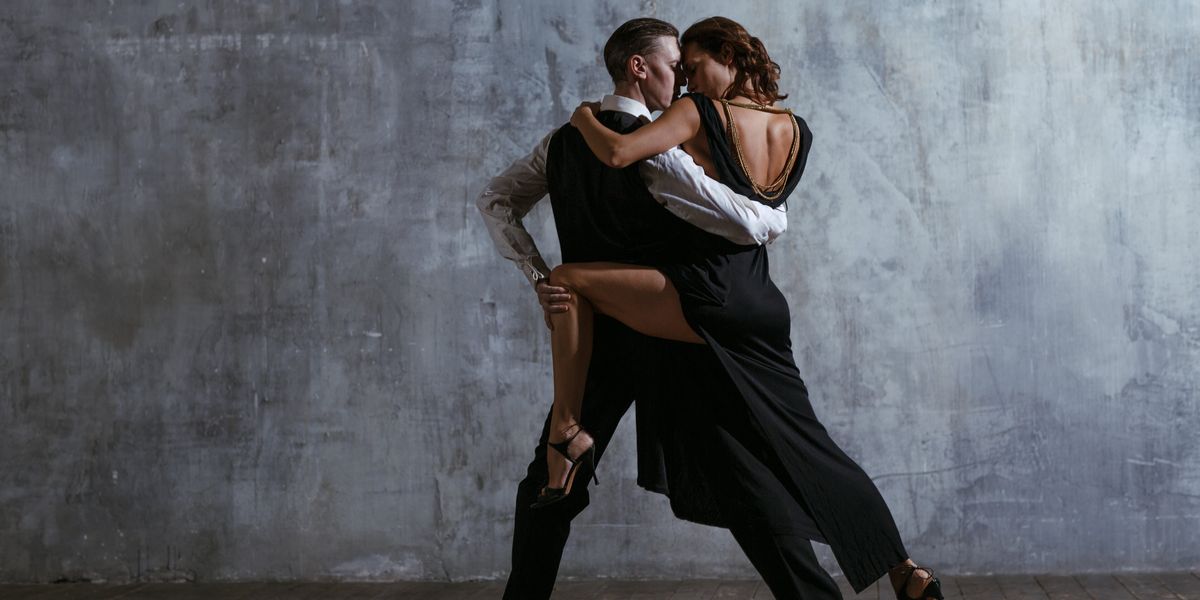Watching Dancers Touch Has Taken on New Meaning Today
One of my modern dance teachers at New York University, Joy Kellman, liked to give us an exercise in partnering class in which we would simply lie on top of each other. We’d completely let go, and just focus on feeling each other’s weight. Sometimes, Joy would then climb on top of both of us together, creating a triple decker of bodies.
I remember not only being surprised by how much weight my body could support, but also by just how good it felt. It was like a comforting weighted blanket energized in human form. Just lying there, I could concentrate on the sensations of physical connection: feet on feet, shoulders on shoulders, head on head.
Today, memories of that kind of full-body contact seem like an impossible dream. When we’re all carefully navigating our lives six feet apart from each other, our sensitivity to touch—feeling it, or even just seeing it—has become heightened.
The other day I found myself staring at a photo of a Serenade rehearsal from the pre-pandemic days, where the woman uses her upstage hand to gently shield her partner’s eyes while tightly grasping his downstage shoulder with her other arm, and resting her head on his back. The man protectively wraps his front arm back and around the woman’s waist, holding her tight to him.
It’s a tender moment I’d never paid much attention to before. But in a world where we’re no longer allowed to hug, high-five or even get too close to anyone we’re not living with, the thoughtful, poignant way they’re embracing each other struck me in an entirely new way.

Houston Ballet II dancers rehearse Serenade
Lawrence Elizabeth Knox Courtesy Houston Ballet
Our months of social distancing seem to have changed our relationship to physical contact in dance.
I’ve found that when rewatching old work, each moment when dancers collide with another body feels electric. At first it’s a bit of shock to see something that’s been forbidden since March. But, once I remind myself that the footage is from the “Before Times,” I love scrutinizing how their movement fuses, reacts to and enhances one another’s when they connect. Take Trisha Brown’s Spanish Dance, for instance. One by one, the dancers pack together, hips informing hips, no fear of infection amongst them.
At the moment, the only contact we’re really seeing between dancers in new works are between performers who are living together or are part of a “pod.” The vast majority of the dance films and outdoor performances consist of solos or socially distanced group work that’s danced at least six feet apart. So seeing physical touch between dancers has become a rare treat.
I wonder how, when a vaccination makes contact a regular part of daily life—and dance—again, our response to touch in dance might evolve once more. Will we maintain some of this hyperawareness? Will the trauma of the pandemic be etched into our reactions from here on out—or at least for a time?
For now, I’m feeling a heightened sensitivity even to those moments when dancers nearly touch. In San Francisco Ballet’s new Dance of Dreams, the final section by Christopher Wheeldon (long known as a master partner choreographer) plays with several missed connections. The fingers of dancers Madison Keesler and Benjamin Freemantle hover just barely apart before finally latching onto each other.
Once they do connect, they rarely let go—a suiting metaphor for how badly we’ll all want to hold on to one another once we can stop living in fear of other bodies. But the ballet ends with their hands slowly pulling apart, even as they longingly reach toward each other. It’s pretty fitting for how we all feel right about now.





